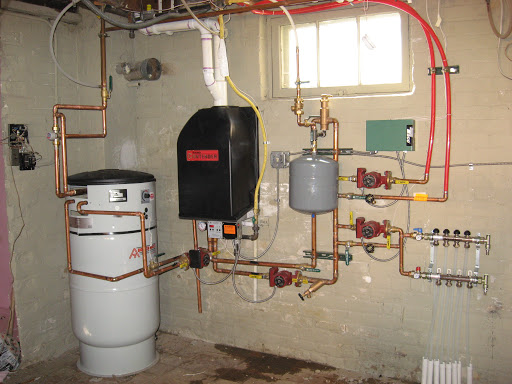How to Care for Your Home's Hot Water System Properly
How to Care for Your Home's Hot Water System Properly
Blog Article
We have uncovered this great article about How to Maintain Your Water Heater & Prolong its Life down the page on the internet and reckoned it made perfect sense to write about it with you over here.

Warm water is important for everyday convenience, whether it's for a revitalizing shower or cleaning meals. To guarantee your hot water system runs effectively and lasts longer, regular maintenance is crucial. This write-up offers functional tips and insights on how to maintain your home's hot water system to avoid disruptions and costly repairs.
Intro
Preserving your home's warm water system might seem challenging, yet with a few easy steps, you can guarantee it runs efficiently for many years to find. This overview covers every little thing from recognizing your warm water system to do it yourself maintenance tips and recognizing when to employ expert assistance.
Importance of Preserving Your Hot Water System
Regular upkeep not only expands the lifespan of your warm water system yet additionally guarantees it runs successfully. Overlooking maintenance can result in decreased performance, greater power expenses, and also early failure of the system.
Signs Your Hot Water System Demands Upkeep
Understanding when your hot water system requires focus can stop major problems. Watch out for indicators such as inconsistent water temperature level, odd noises from the heating unit, or rusty water.
Comprehending Your Warm Water System
Before diving right into maintenance tasks, it's helpful to comprehend the standard components of your warm water system. Typically, this includes the water heater itself, pipelines, anode poles, and temperature level controls.
Monthly Upkeep Tasks
Regular monthly checks can aid catch minor issues before they intensify.
Purging the Hot Water Heater
Purging your water heater gets rid of debris accumulation, enhancing efficiency and prolonging its life.
Monitoring and Changing Anode Rods
Anode poles prevent deterioration inside the storage tank. Inspecting and replacing them when broken is vital.
Evaluating and Changing Temperature Settings
Readjusting the temperature setups guarantees optimum performance and safety.
Do It Yourself Tips for Upkeep
You can do several maintenance jobs on your own to keep your warm water system in leading problem.
Checking for Leakages
Frequently evaluate pipelines and connections for leaks, as these can bring about water damage and higher bills.
Testing Stress Relief Valves
Testing the stress relief valve ensures it operates appropriately and protects against too much pressure buildup.
Protecting Pipes
Insulating hot water pipes reduces warmth loss and can conserve energy.
When to Call a Specialist
While DIY maintenance is helpful, some concerns call for professional experience.
Complex Concerns Calling For Professional Help
Examples include major leaks, electric issues, or if your hot water heater is constantly underperforming.
Routine Professional Upkeep Advantages
Expert upkeep can consist of extensive examinations, tune-ups, and ensuring conformity with security standards.
Final thought
Routine upkeep of your home's warm water system is essential for efficiency, durability, and cost savings. By following these suggestions and knowing when to seek expert aid, you can make sure a trustworthy supply of warm water without unanticipated disturbances.
How to Maintain an Instant Hot Water Heater
Before tinkering with your hot water heater, make sure that it’s not powered on. You also have to turn off the main circuit breaker and shut off the main gas line to prevent accidents. Also turn off the water valves connected to your unit to prevent water from flowing into and out of the appliance. 2. When you’re done, you have to detach the purge valves’ caps. These look like the letter “T†and are situated on either side of the water valves. Doing so will release any pressure that has accumulated inside the valves while at the same time avoid hot water from shooting out and burning your skin. 3. When the purge valves’ caps are removed, you have to connect your hosing lines to the valves. Your unit should have come with three hoses but if it didn’t, you can purchase these things from any hardware or home repair shops. You can also get them from retail stores that sell water heating systems. Read the user’s manual and follow it to complete this task properly. When the hosing lines are connected, open the purge port’s valves. 4. You should never use harsh chemical cleaners or solutions when cleaning your unit. Make use of white vinegar instead. It should be undiluted and you’ll probably use about 2 gallons. 5. Now flush your water heater. This task should probably take about 40 minutes. We can’t give you specific directions for this because the procedure is carried out depending on the type, model and brand of your heater. With that being said, refer to the user’s manual. 6. When you’re done draining the unit, you have to turn off the purge port valves again. Remove the hosing lines that you earlier installed on each of the water valves. Put the valve caps (purge port) back in their respective places and be very careful so as not to damage the rubber discs that are found inside these caps. 7. Now that everything’s back in place, check your user’s manual again to find out how to reactivate your water heating system. 8. Once it is working, turn one of your hot water faucets on just to let air pass through the heater’s water supply pipes. Leave the tap on until water flows smoothly out of it. https://www.orrplumbing.com/blog/2014/september/how-to-maintain-an-instant-hot-water-heater/

Do you really like reading up on What Kind of Maintenance Do Water Heaters Need?? Try leaving feedback down the page. We'd be glad to see your ideas about this blog entry. In hopes to see you back again in the future. In case you enjoyed reading our page kindly consider to pass it around. I treasure your readership.
Click Here! Report this page